A detailed report about my stay on the floating reed islands of the Uros people on Lake Titicaca, Peru.
“There! Uros Islands! Can you see them? Can you see them?” My shouts probably sound a bit too eager, but that is all well, as I’m sitting on the deck of a private boat, gently rocking over Lake Titicaca in Peru. The extremely intense sun bleaches away all colours, yet in the distance, my keen eyes spotted the floating reed islands of the Uros people a few kilometres away. Unlike my eyes, the telephoto lens of my camera seems to have fewer problems with 4.000 meters of altitude and barely a cloud offering shade.
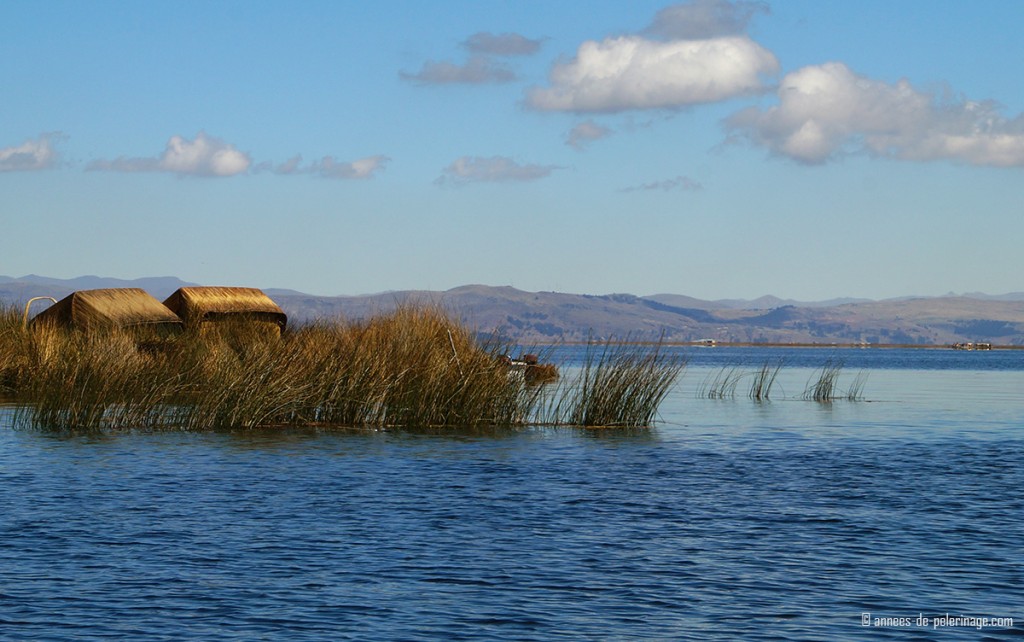
Uros, even after all these months just mentioning the name itself brings up emotions. The Uros are an indigenous group in Peru most famous for their way of life. In ages past, they started building manmade islands from the abundant reeds along the shores of Lake Titicaca. Usually anchored around a place not far from the shore, these islands are in fact afloat.
The reason for building these unique islands was most probably defensive, though no written records or oral histories remain. The day before I had been to more than spectacular Amaru Muru – another breathtakingly beautiful site around Lake Titicaca without an unknown history. One thing seems clear: they succeeded. Unlike a lot of other indigenous people they persisted throughout the ages, even slavery during the Inca era.
_________________
Wondering what to pack for Peru? Check out my detailed Peru packing list!
Landing on the floating reed islands of the Uros people
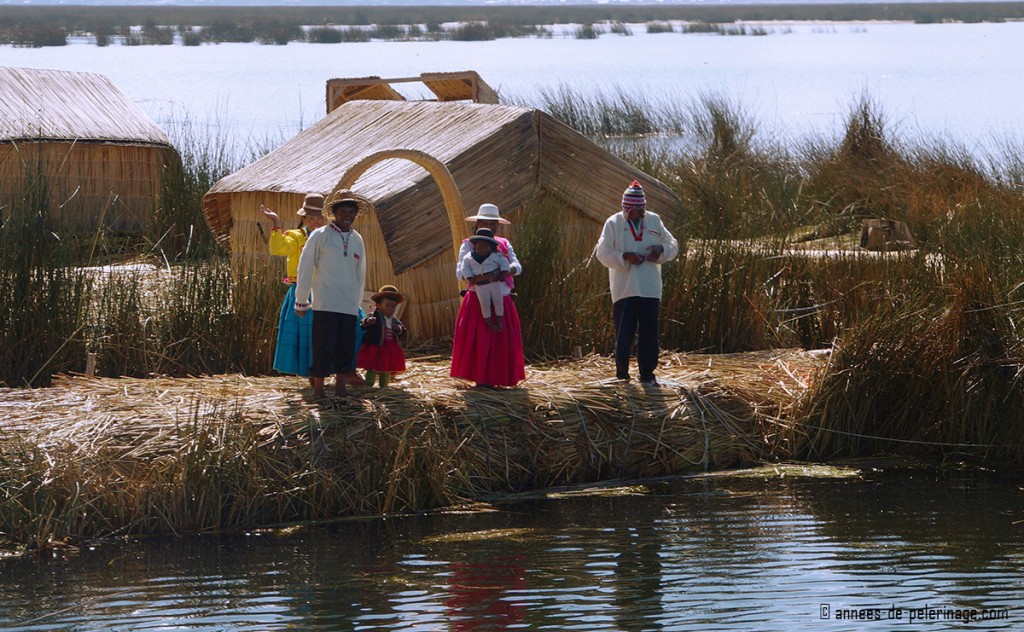
“Kamisaraki, Kamisaraki” is how I am greeted by the Uros family when my boat finally approaches the small reed island. They wave cheerfully while the youngest girl of the family is shyly inspecting the newcomer from the protective grasp of her mother’s arms. My guide had been adamant about teaching me some Aymara basics. With probably all the wrong pronunciation I shout my “Wariki” over the shallow waves. How are you? I’m good! It saddens me to think that the Uros lost their original language a few hundred years ago – Aymara is all they speak these days.
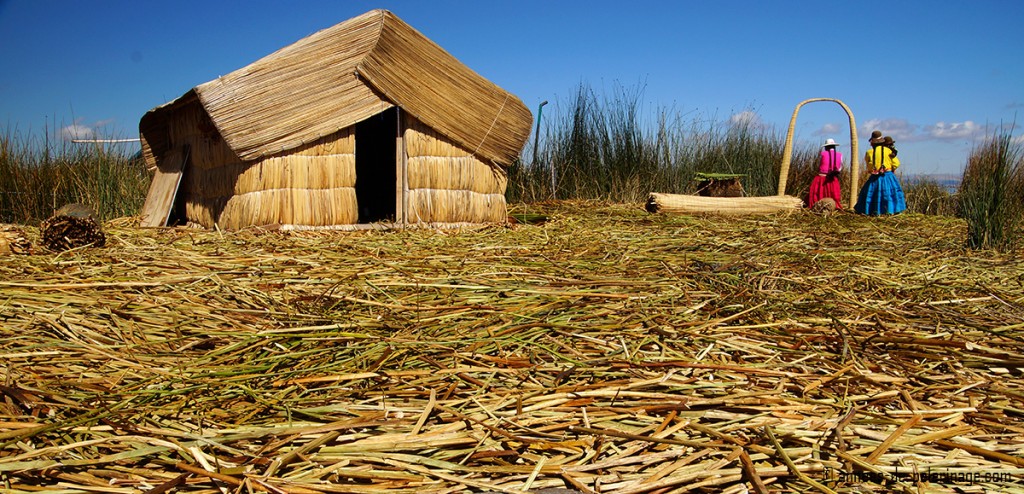
Only seconds later my feet touch the ground on the reed islands. Quite a peculiar feeling: With each step I take, my shoes sink in a couple of centimetres, much like walking on a big cushion or a trampoline. With a casual handshake, the patriarch of the island introduces himself as John. Inwardly I wince at hearing a Christian name, but then again my own Name isn’t exactly German either, so I scold myself for almost being a patronizing asshole.
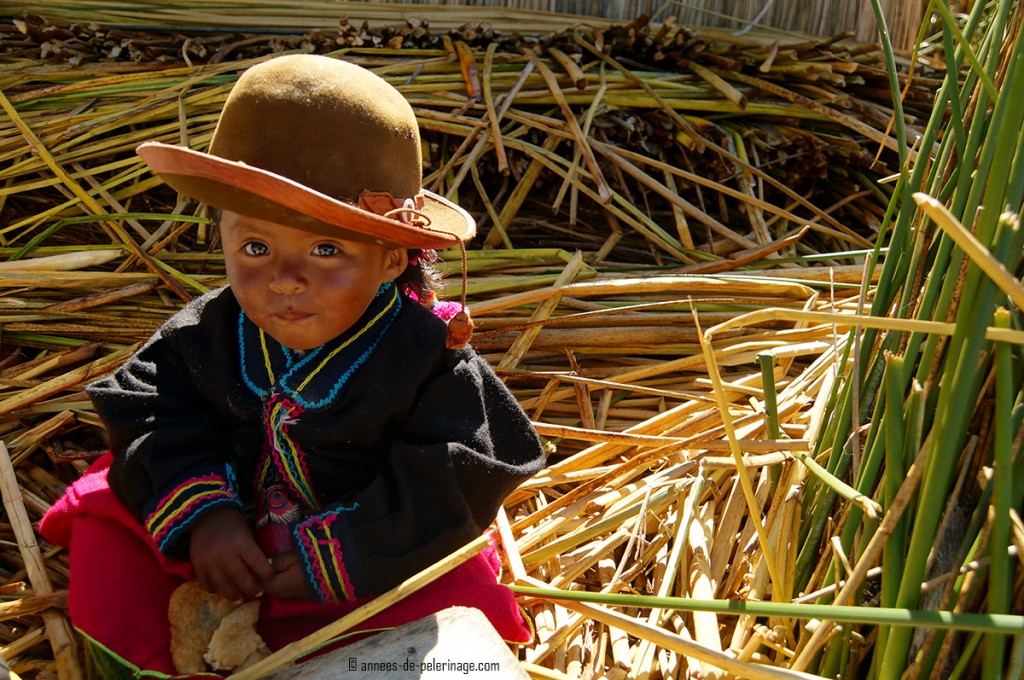
Introductions for the rest of the small family follow – the star obviously being the little princess of the island. Each reed island, you have to know, is inhabited and maintained by one Uros family, though the size of them varies.
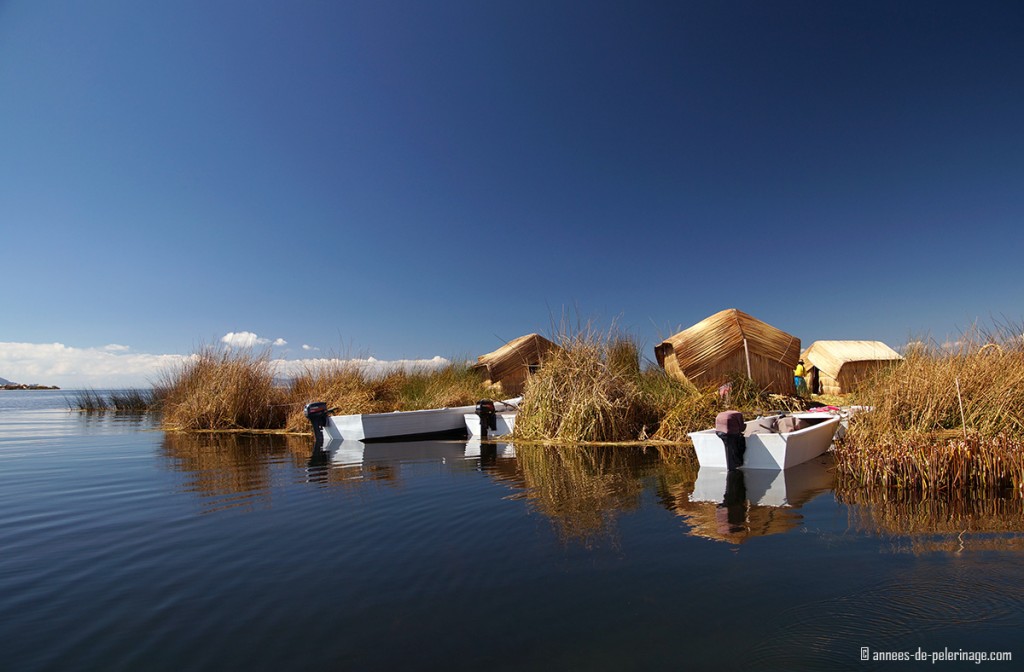
John tells me that his island is in fact quite young. Only 3 years ago he decided to leave one of the bigger islands and start his own island for his small family. With some pride, he elaborates that it is the only reed island still completely afloat. All other islands are technically not moveable anymore. In the shallow waters of Lake Titicaca, the totora reeds permanently anchored the other islands to the bottom of the lake. Truth or exaggeration? Later I would pass some other islands that looked a bit like tourist traps, so he might actually be speaking the truth.
But even John’s reed island could not escape the relentless demands of modern life. In fact, it seems the only reason for the Uros to keep living on their floating reed islands are the tourists paying good money for visiting them. Better than working the fields, I would assume. Each hotel around Lake Titicaca has an exclusive arrangement with one island. The Uros Islands really have become an industry. Fancy, multi-decked reed boats find their way to Instagram, with none of the tourists questioning the authenticity. Luckily I stayed at the Titilaka Lodge – which had the connections to this pristine little island (read about my stay at this beautiful luxury hotel here).
Steering a boat, cutting totora reed & hunting
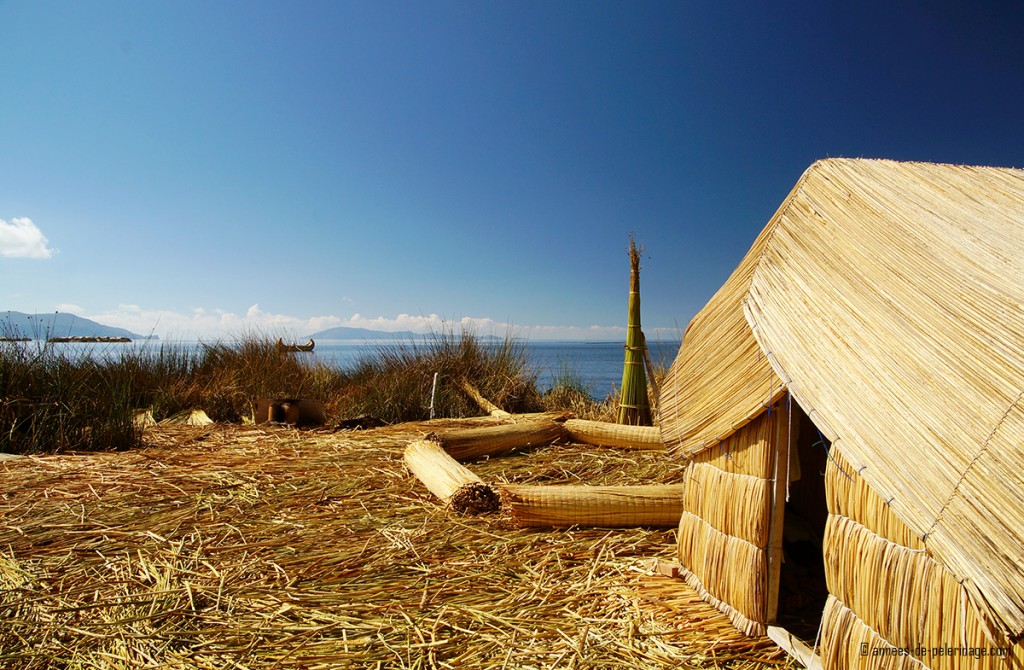
So perhaps it hardly comes as a surprise when John’s son starts out explaining how the reed islands are maintained. For this purpose, he ushers me to a prearranged area on the little island with a reed-bench that seems to have seen its share of tourists before me. I tell my guide that I really don’t need to hear what the Uros islands are made of and rather would like to actually help in the process.
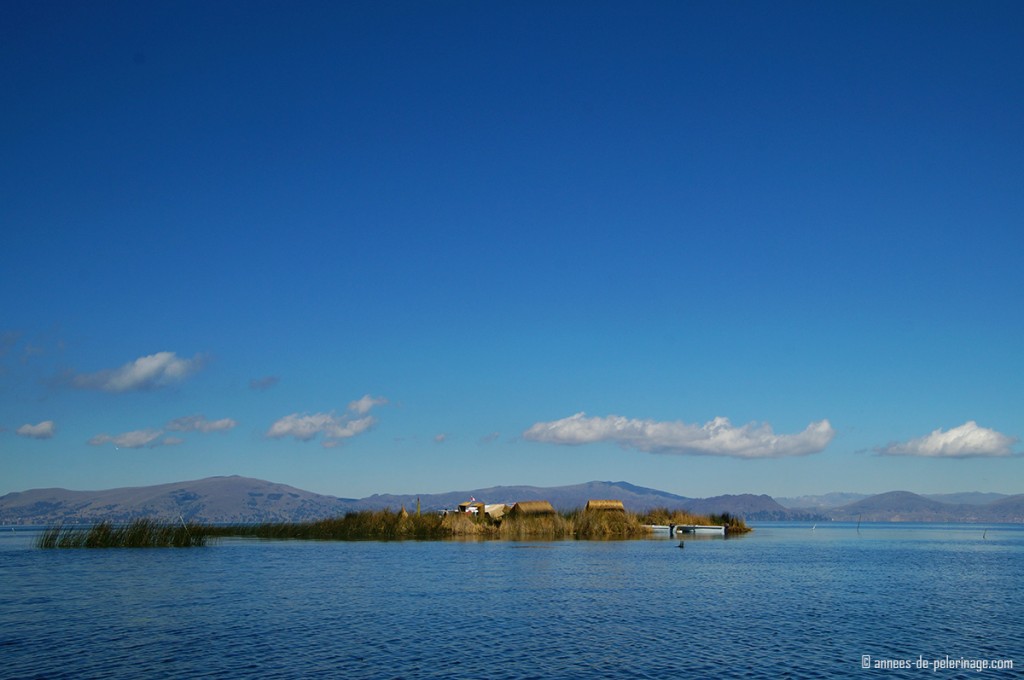
John agrees and we take his traditional reed boat to go harvesting the very reed that sustains everything the Uros do. This is a task John and his family have to do every day very early in the morning. You pile fresh totora reeds on top while the bottom rots away. Keeping up the islands is a constant fight against decay.
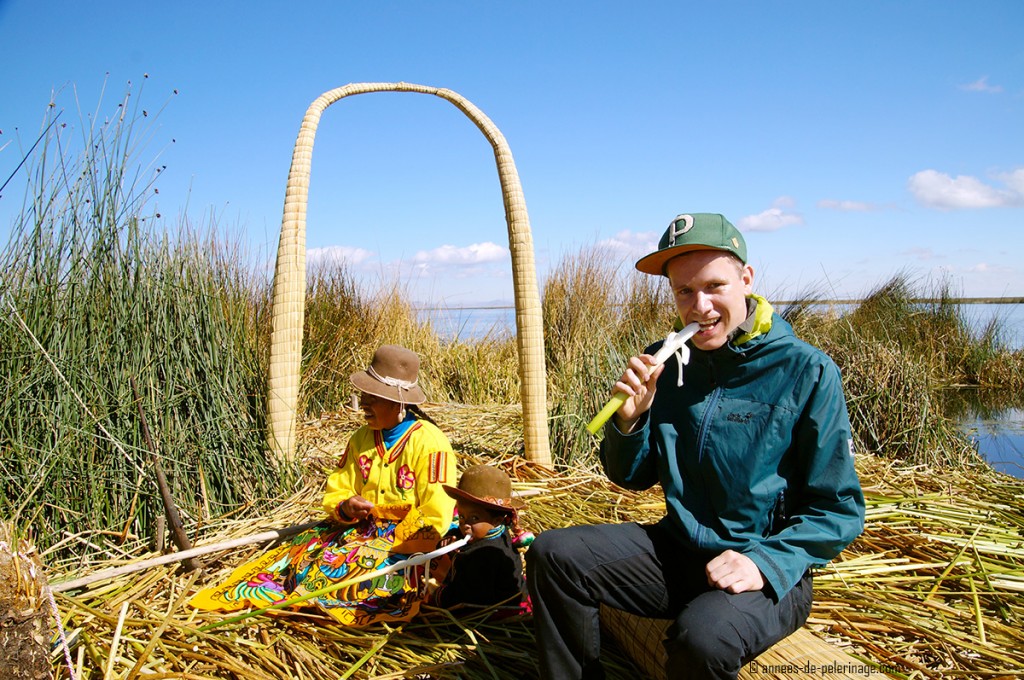
The totora reed is also the basic food staple of the Uros. Believe it or not, the lower half of the reeds are edible. Peel away the outer layer and inside you’ll find your Lake Titicaca banana. My guide advice me against eating big amounts, though, lest my unaccustomed European stomach sickens. Since the totora reeds taste rather bland, a bit leafy, yet juicy, I really do not feel inclined to gobble it all up.

But back to the harvest. The Uros anchor their floating islands very close to the marshlands along the eastern shore of Lake Titicaca. The water is very shallow there, maybe 2 meters deep. Armed with a big sickle on a very long pole, John shows me how to cut the totora: Find a big bushel, set the sickle and with a very swift move pull the sickle towards the body.
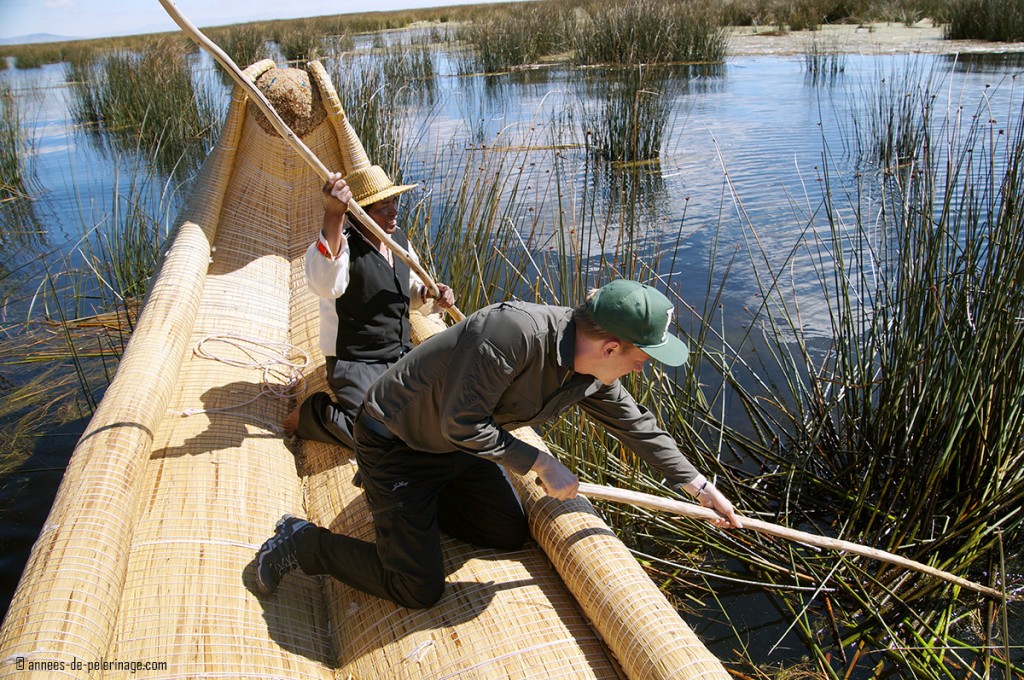
What looks like practised ease on John, is in fact quite hard. The friction of the water against the wooden pole makes me fail my first 4 attempts. Actually navigating the overlong pole towards the base of the reeds needs practice – though there are no currents to speak of. Once cut, however, things get easy, since the reeds, even freshly cut, will swim.
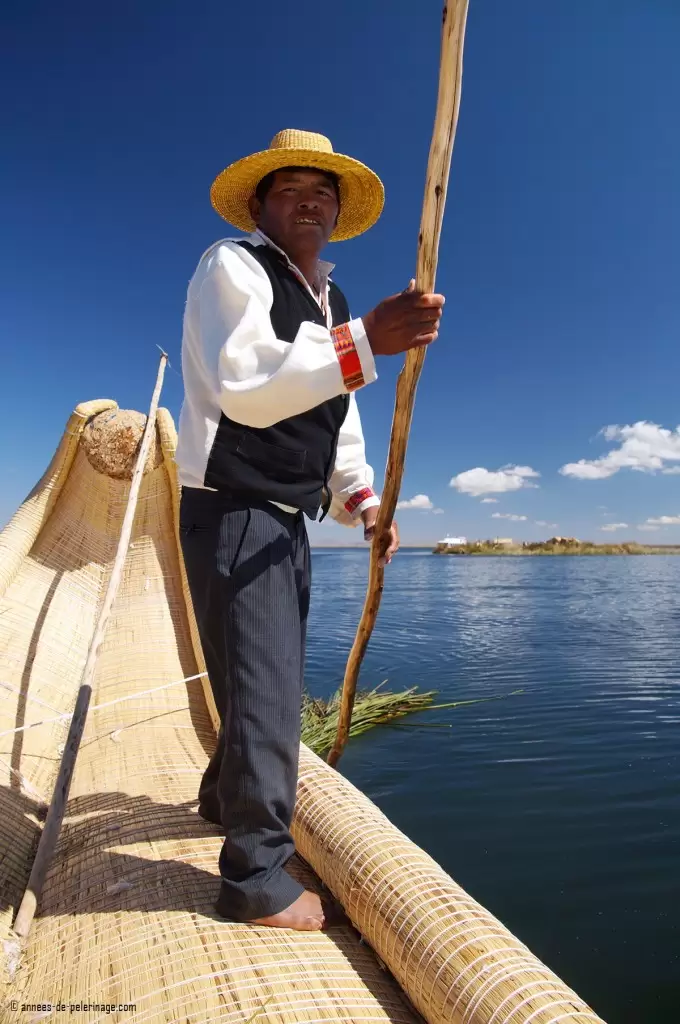
I am equally quite amazed how skilfully John navigates the cumbersome reed boat with very precise strokes – our freshly cut prizes trailing behind secured by a rope. Then again he had some practice, even though I am quite sure that he is regularly using a motor boat for the same tour. This reed boat just looks way to pristine.
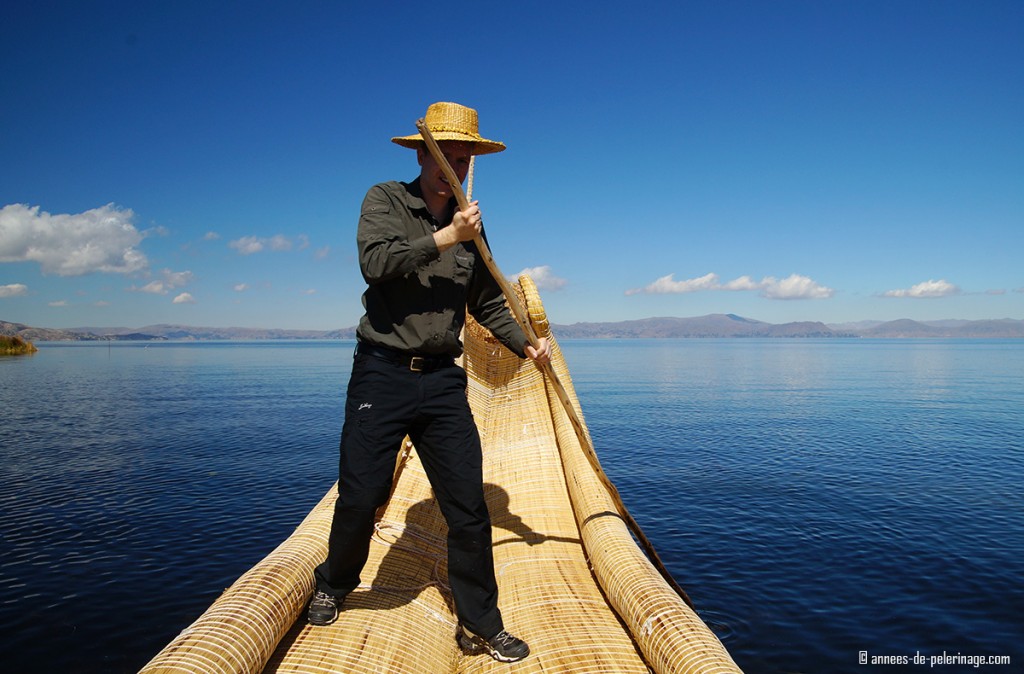
I couldn’t resist trying to steer the boat myself. But let me tell you that I gave up soon afterward. Despite my best intentions, I really couldn’t get the boat moving anywhere it should. Ah, and there they say you learn everything you need in school! With a helpless curse, I surrender the pole to John and settle on pondering what I am good at. Nothing that would sustain me while living among the Uros, I assume.
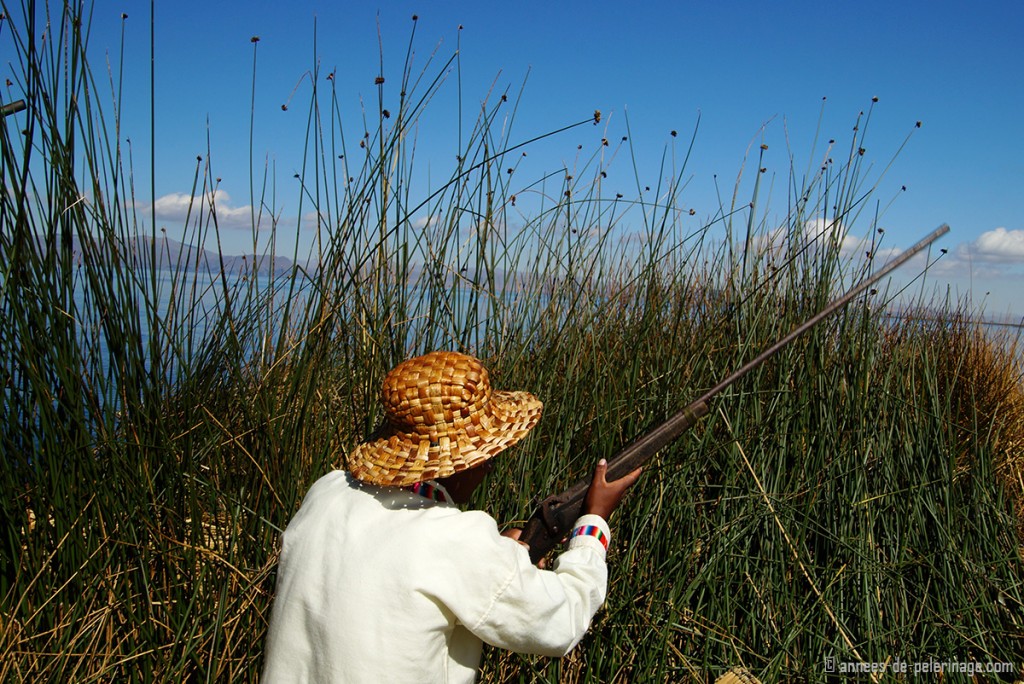
Now do not get the impression that their daily journey into the marshlands is limited to harvesting the totora reeds. Checking upon a nest of waterfowl for eggs, fishing, and hunting wild birds keeps the diet of the Uros people well balanced. In fact, I get the unique chance to see that part of their way of life as well – John’s son takes me along on a hunt. Ah, the excitement!
Sleeping & eating on the islands of the Uros
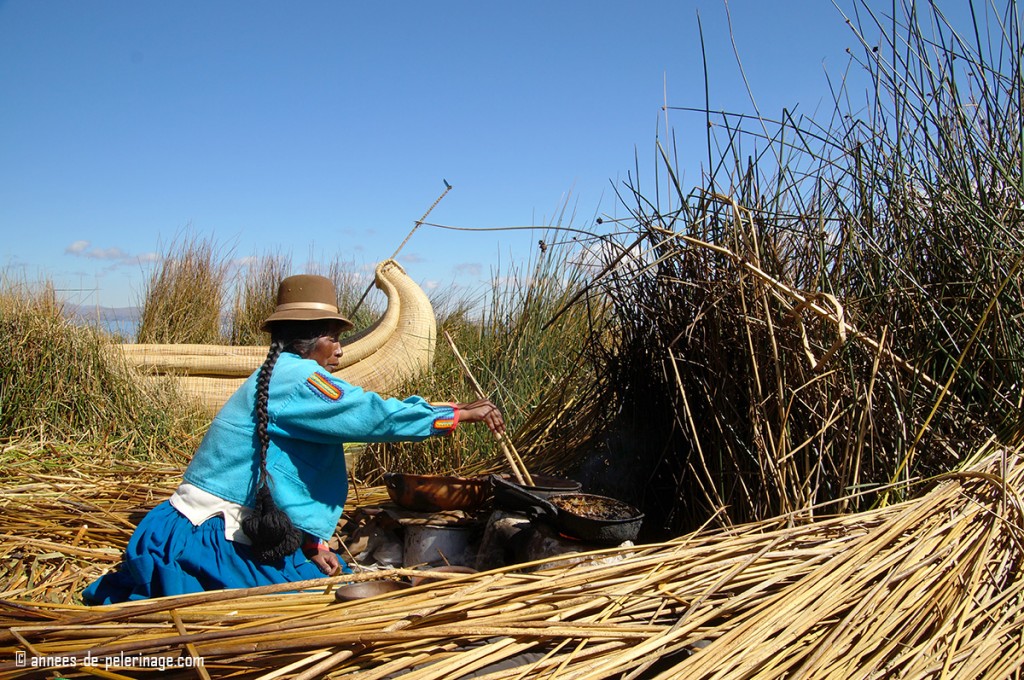
No adventure can last forever. Upon our return, John’s wife has prepared some food. Stir fried dough reminiscent of the Hungarian Lángos from my youth are offered to me – simple fare, yet tasty. In fact, I’m quite starved after a long day on the boat(s). The hearth is the only place on the floating island that is protected by a slab of stone, with fire obviously being the biggest threat to the fragile islands.
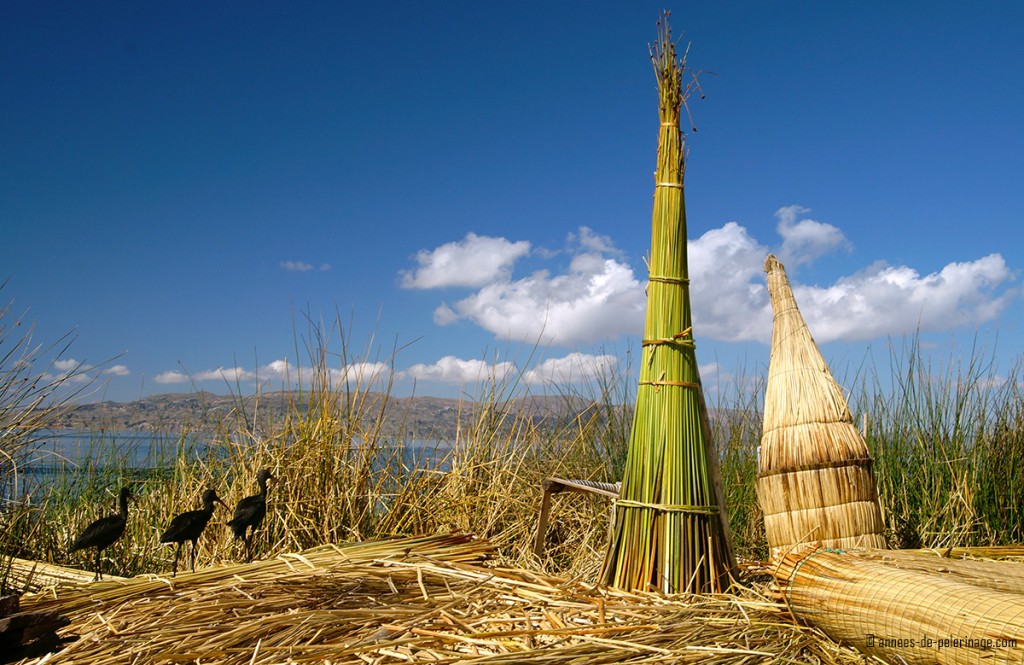
The perhaps most amazing fact is, that the Uros people even domesticated certain birds. John has a small colony of Ibis skirting around on his islands, providing eggs and meat. The larger reed islands will also have cats to keep away the inevitable vermin.
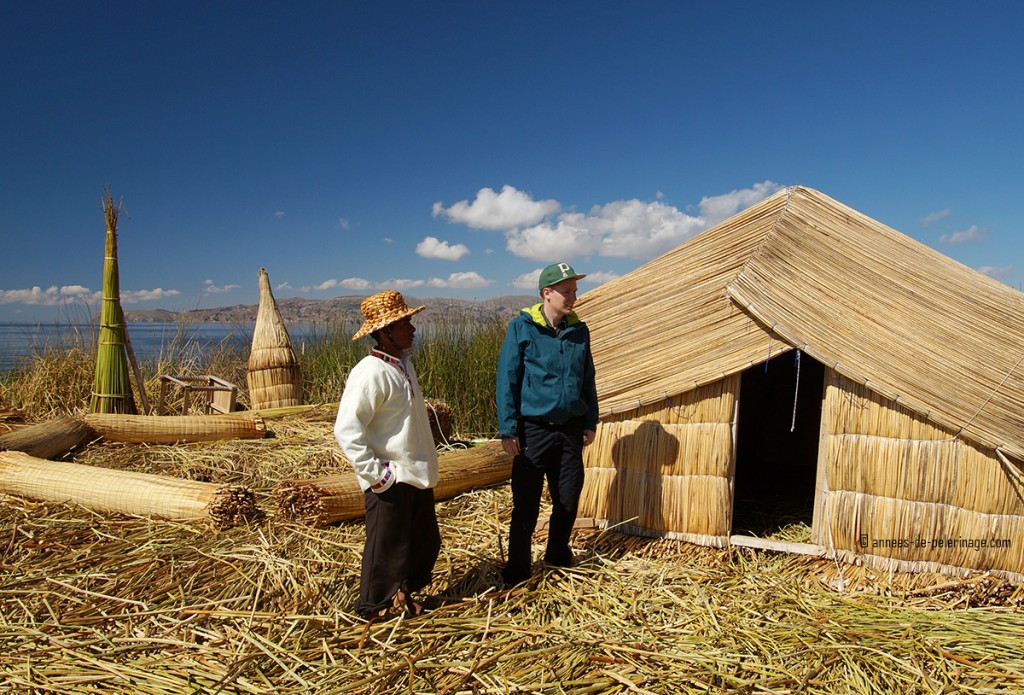
Now naturally there remains the question about accommodation. The reed islands and the marshlands around form the whole cosmos of the Uros life. While most of the activities are actually reserved for the outside, the nights on 4.000 meter high Lake Titicaca can be extremely cold. Temperatures below the freezing point are very common during the dry season/winter. So every reed islands feature little huts – one and all bedrooms for the members of the family.
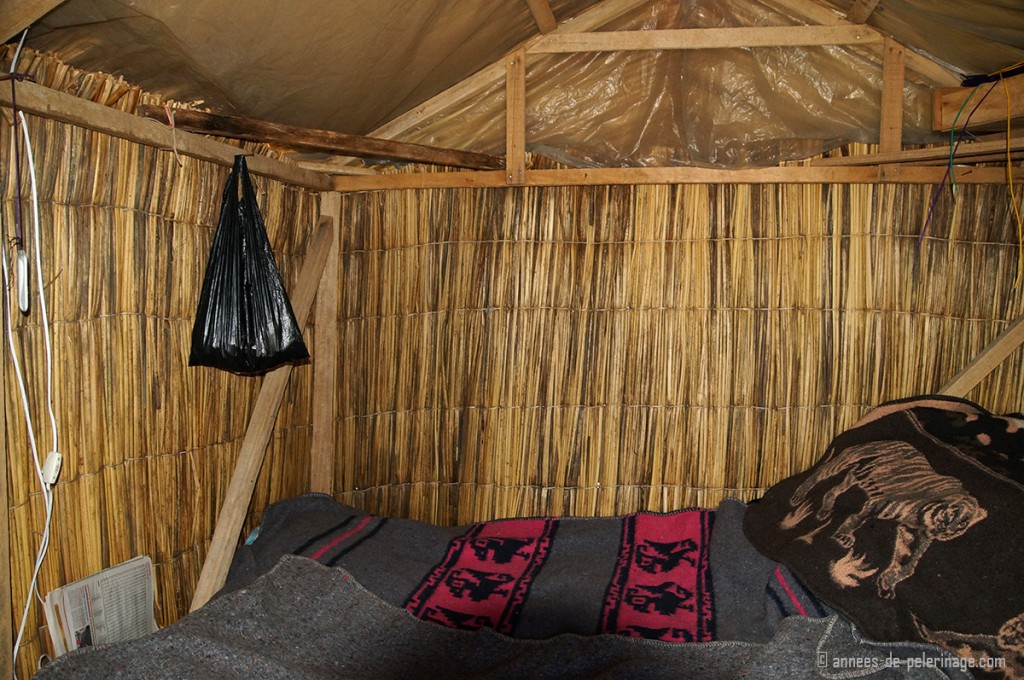
If you want (and pay extra obviously) you can sleep on the islands for a relatively modest fee. An offer I could not resists – but do not expect anything in terms of luxury. (Thank god my Peru itinerary allowed for some extra time!) The interior of the hut is more than spartan, with a single solar powered light bulb your only luxury. Prepare yourself for a cold night!
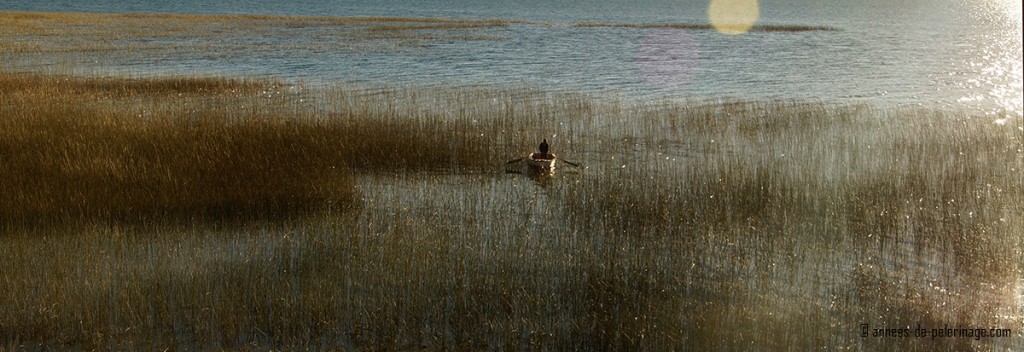
Personally, I am quite undecided about this experience. Sure waking up among the beautiful tranquillity of Lake Titicaca is hard to trump. But it also doesn’t feel very authentic. I soon realized that John and his family were only wearing the colourful garments because I was around. I could also tell that, despite my best efforts at socializing, he really was only hosting me for the money.
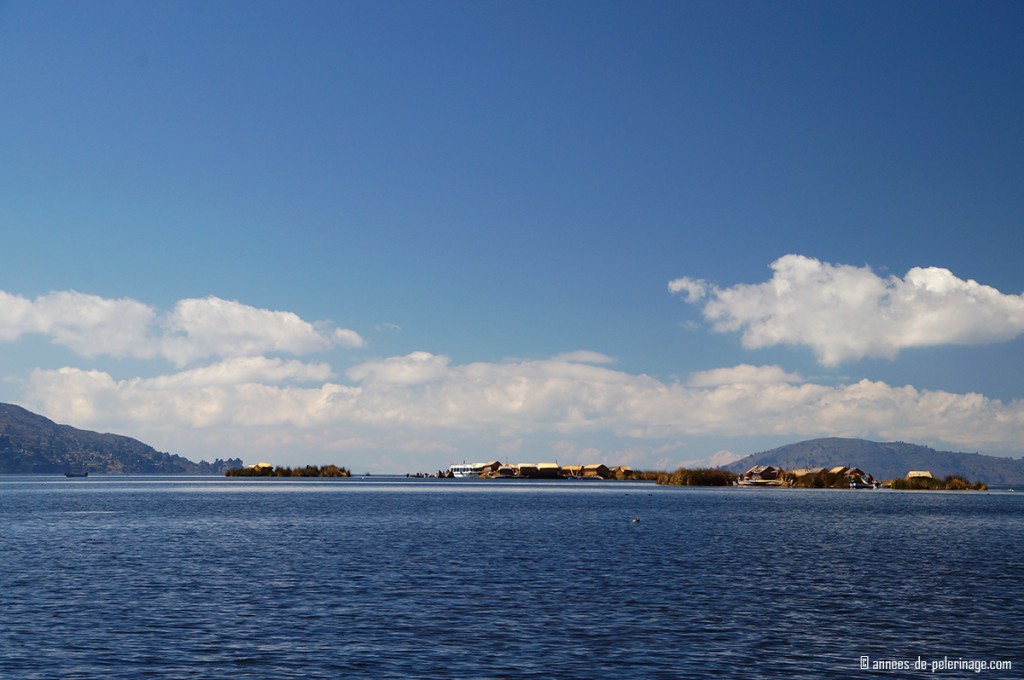
I believe on the bigger islands it is even worse since some of them even feature hotel like structures. My guide later told me that there are some islands where tourists aren’t allowed. Those are the islands where the little children go to primary school. Maybe there it is still possible to experience the authentic culture of the Uros.

It’s not to say I was disappointed with my overall experience. I had my fun and I did get an intimate glimpse of a fascinating culture. When I finally left their little haven, they all line up to perform a farewell song, as it is custom with the Uros people. But my few hours on the island made me wonder, just how long will they be able to preserve their way of life.
Have you ever been to Lake Titicaca? How did you experience the Uros people? Tourist trap or authentic adventure – share your thoughts with me!
___________________________
Looking for more authentic experience in Peru? Try these:
My day in the utterly beautiful Maras Salt Mines
Tipon – The forgotten water gardens of the Incas
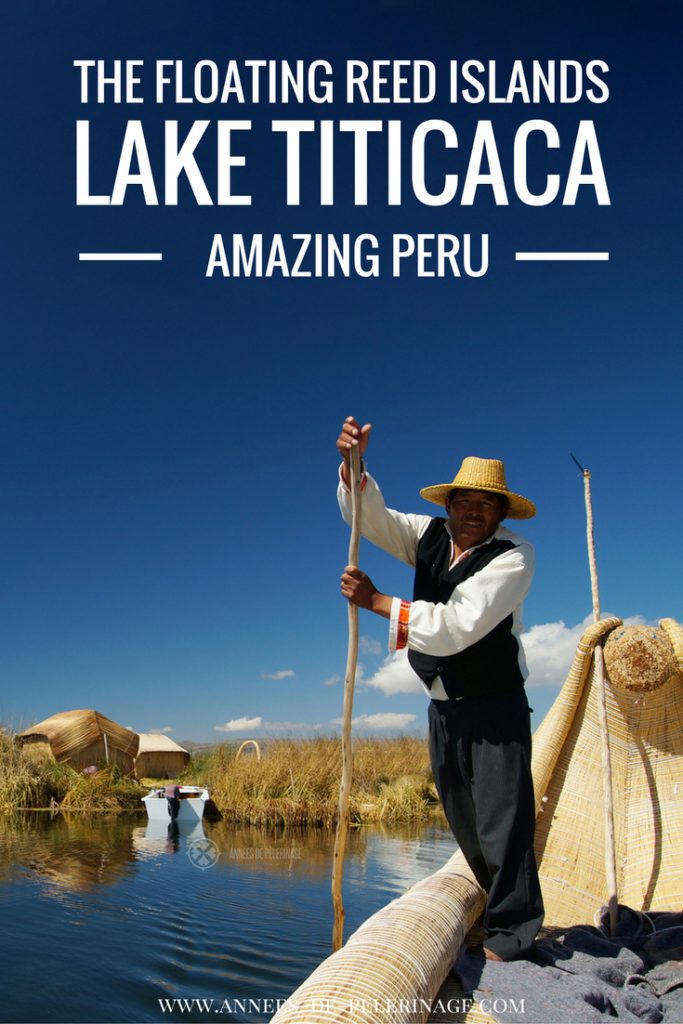


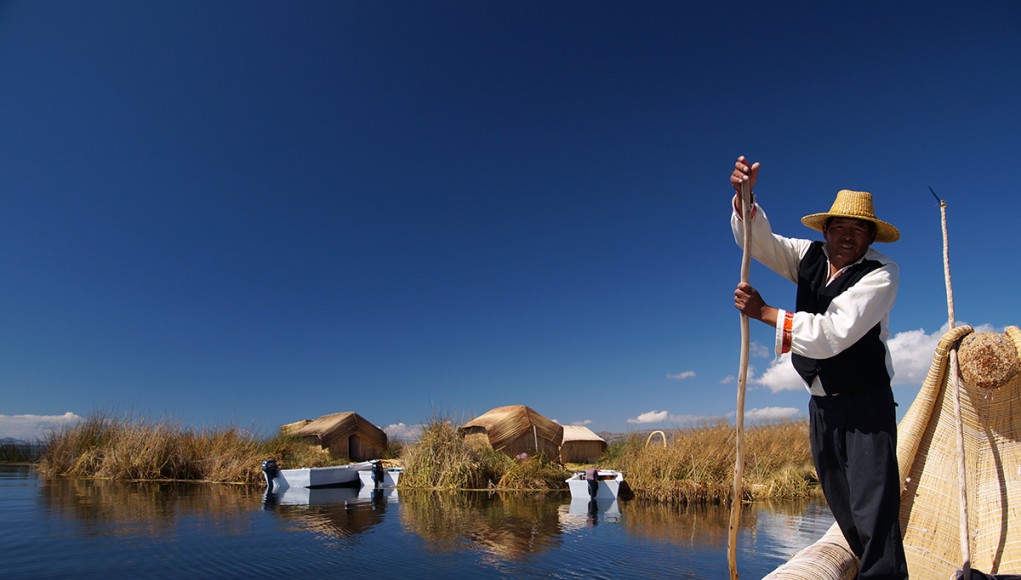

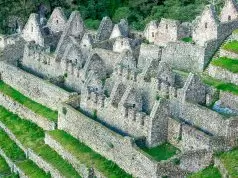
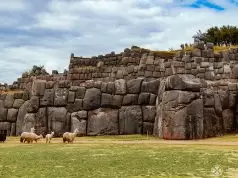

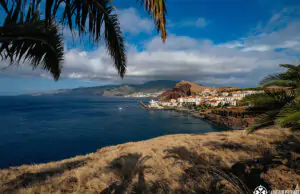
Visitor Rating: 5 Stars